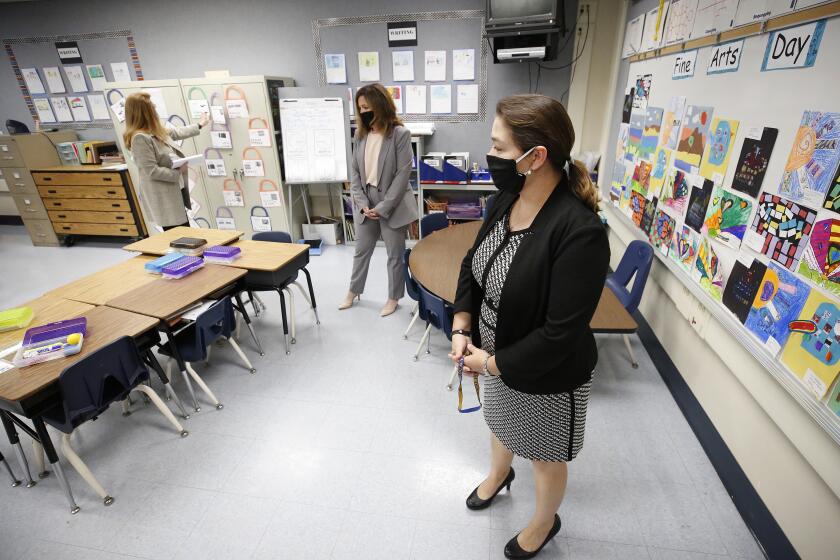Editorial: Does declining school enrollment spell disaster? That argument doesn’t add up

- Share via
Los Angeles schools are among those facing a double whammy on funding in future years. To start, the birthrate has been declining here and throughout California since 2008, which means fewer kids in school now and years into the future. That’s likely to be exacerbated by the pandemic.
Beyond that, California is one of the few states nationwide that fund schools not according to how many students are enrolled but how many actually attend. In other words, schools receive a certain amount of money per student for each day that child is in class.
That puts a special burden on school districts such as L.A. Unified, with large numbers of low-income students. Chronic absenteeism is far more common among impoverished kids, for various reasons. They tend to have more health problems or less access to preventive care. Many people are shocked to learn that the top reason for missing school is dental disease and 66% of Los Angeles area elementary schoolchildren are beset by poor oral health. Unreliable transportation and housing insecurity make life unstable for poor families, and parents working multiple jobs sometimes need their older children to care for younger ones who might be sick.
The school district is dropping toward 400,000 students. There aren’t enough teachers, counselors or nurses for hire. It’s time to envision a smaller school district.
It also doesn’t make sense to deny per-pupil funding for the days when students aren’t in class. The schools’ expenses don’t go down those days; they can’t reduce staffing or rent out space on campus because a student misses three weeks of the school year.
Now, new legislation introduced by state Sen. Anthony Portantino (D–La Cañada Flintridge) would align California with most other states by tying funding to the number of students enrolled in school, rather than daily attendance. That would mean more money for low-income school districts, but Senate Bill 830 would take advantage of the state’s surplus to ensure that no school district loses money as a result.
And in order to make sure that school districts don’t give up their anti-truancy efforts, the bill would require that half of the extra money schools receive be spent on getting more kids to come to school consistently, such as calling parents or holding parent conferences.
Just 23% percent of public school employers submitted pay information for 2020. School districts have an obligation to be transparent with their spending.
So far, so good. But the bill could use some tweaks to ensure that it provides clear directions on how schools should spend the money on anti-truancy efforts. It also should build in a five-year review to see if the new funding model is working as intended. If schools slack off their anti-truancy efforts and absenteeism worsens during that time, the effect on disadvantaged students would be unacceptable. The ultimate goal shouldn’t be just extra money for schools; it should be to reduce chronic absenteeism, which is directly tied to higher dropout rates and lower student performance.
Absenteeism is not the same as declining numbers of students, though. That’s a separate issue that has somehow been conflated by Gov. Gavin Newsom to spell a kind of looming disaster for the state’s public schools. That’s certainly how some school districts as well as teachers unions have been presenting the smaller student population. Newsom proposed a milder form of Portantino’s bill that would, to some extent, uncouple funding from attendance by allowing districts to base funding on attendance in the current year, prior year or the average from the three prior years — whichever is greater.
But tweaking the attendance-based funding formula is not the answer to declining enrollment and in fact, the state doesn’t need a policy solution for this demographic trend. The answer is education funding based on educational needs. Yes, the state can legally reduce the Proposition 98 minimum funding guarantee for public education when the student population drops, but that guarantee was always meant to be a floor, not a ceiling, for school funding. The state can continue funding schools at higher levels as the number of students declines, providing more money for each student.
Let’s not create an illusion of a crisis that doesn’t exist. Fix the attendance-based funding formula and give schools as much money as the state can afford.
More to Read
A cure for the common opinion
Get thought-provoking perspectives with our weekly newsletter.
You may occasionally receive promotional content from the Los Angeles Times.











